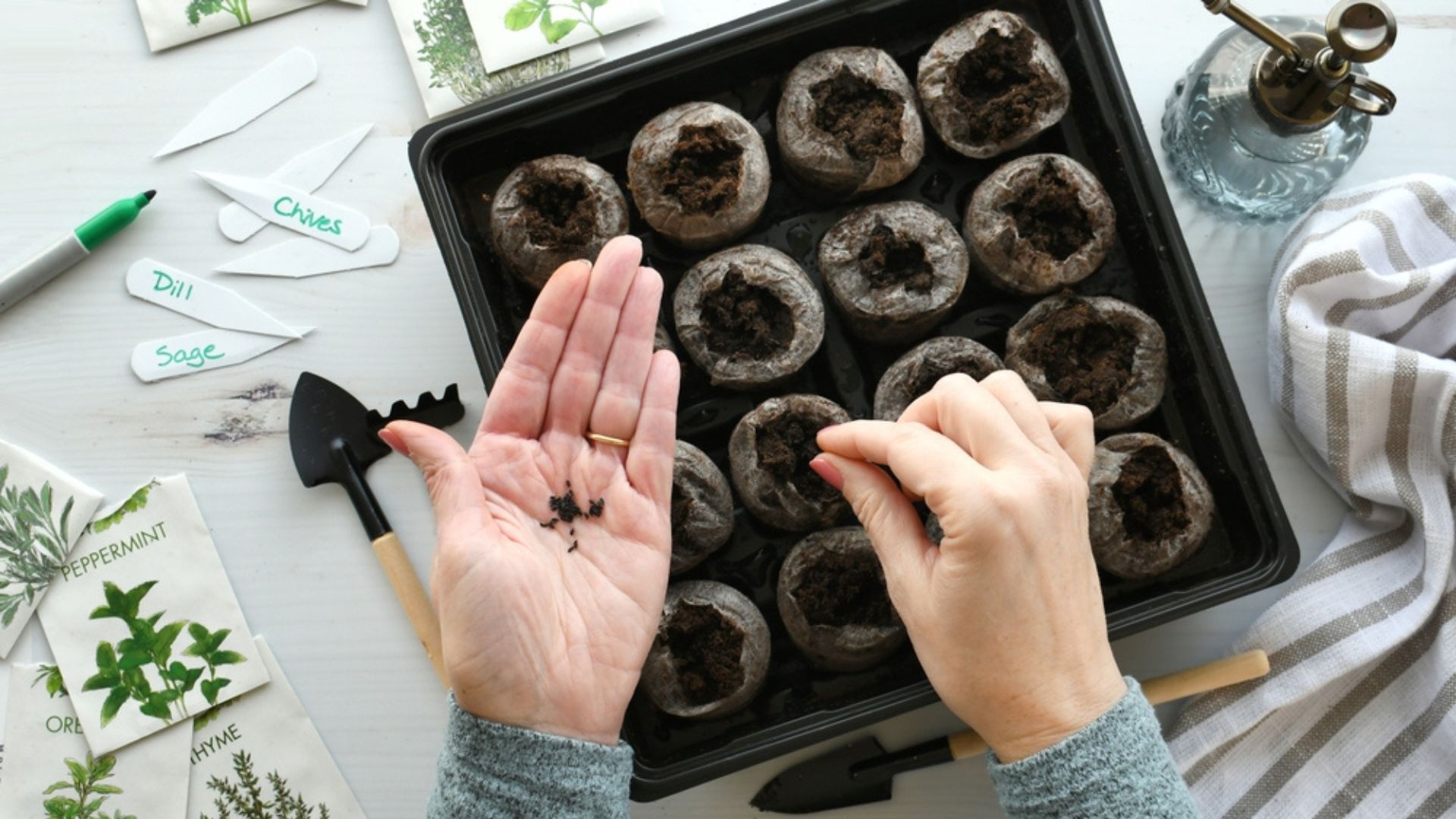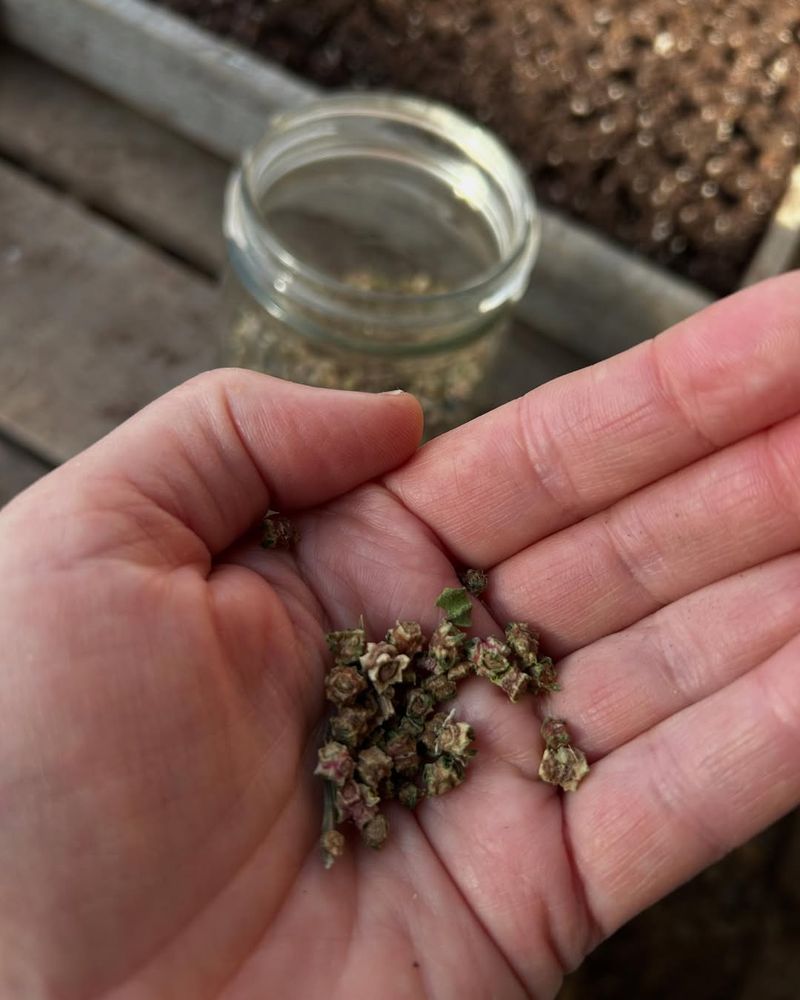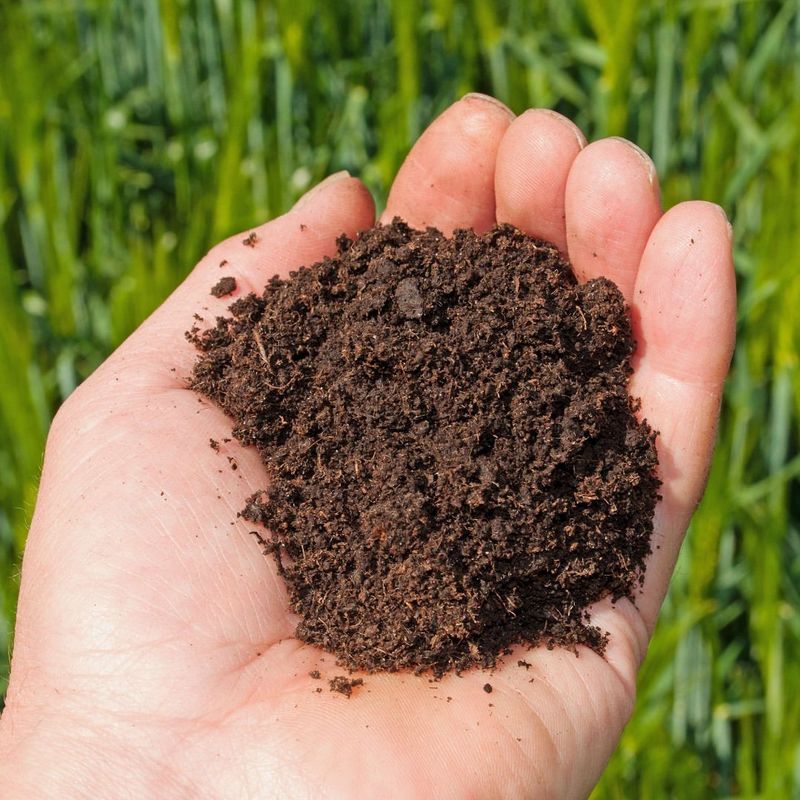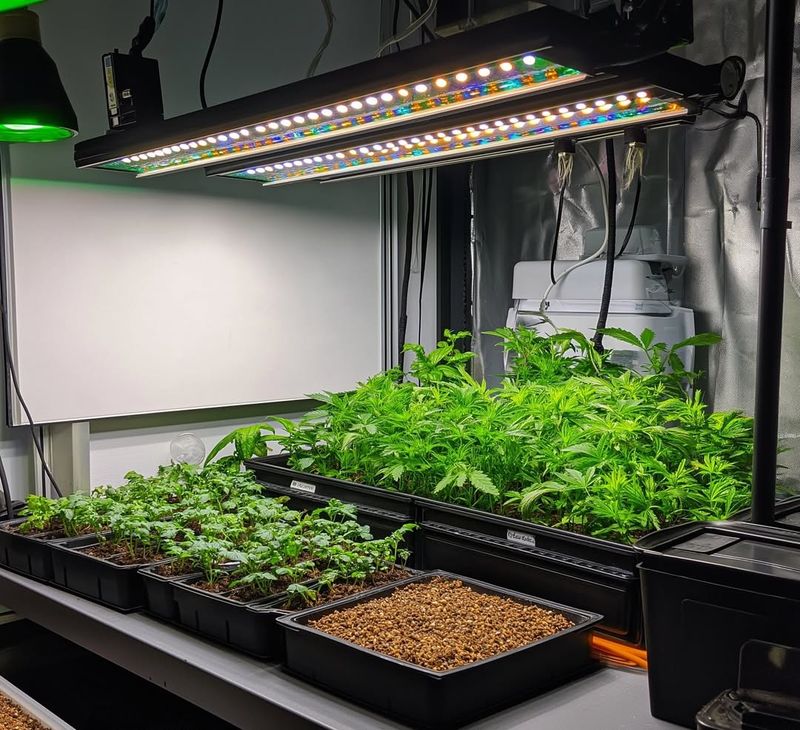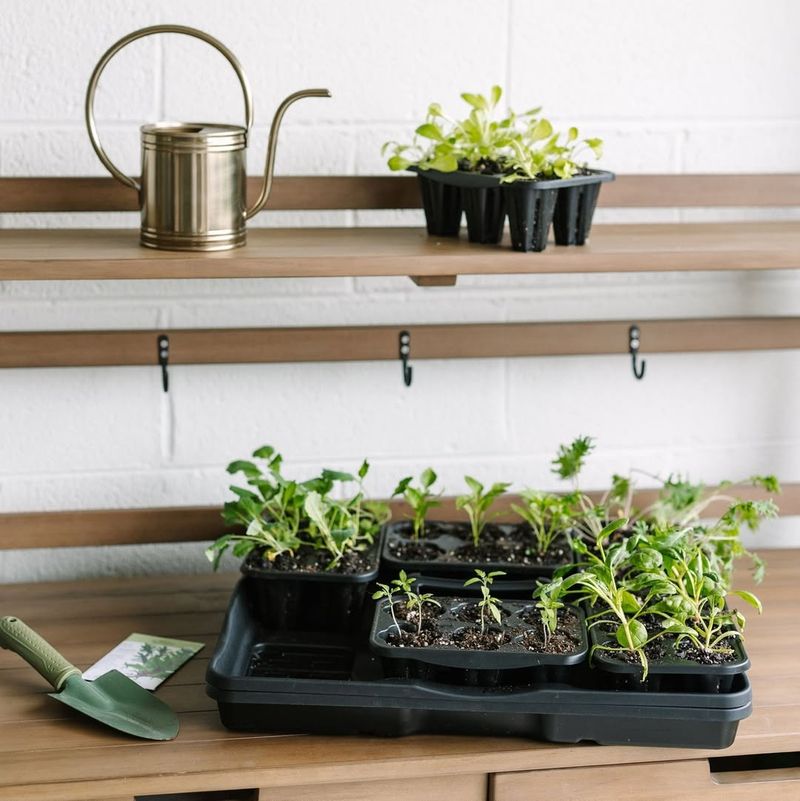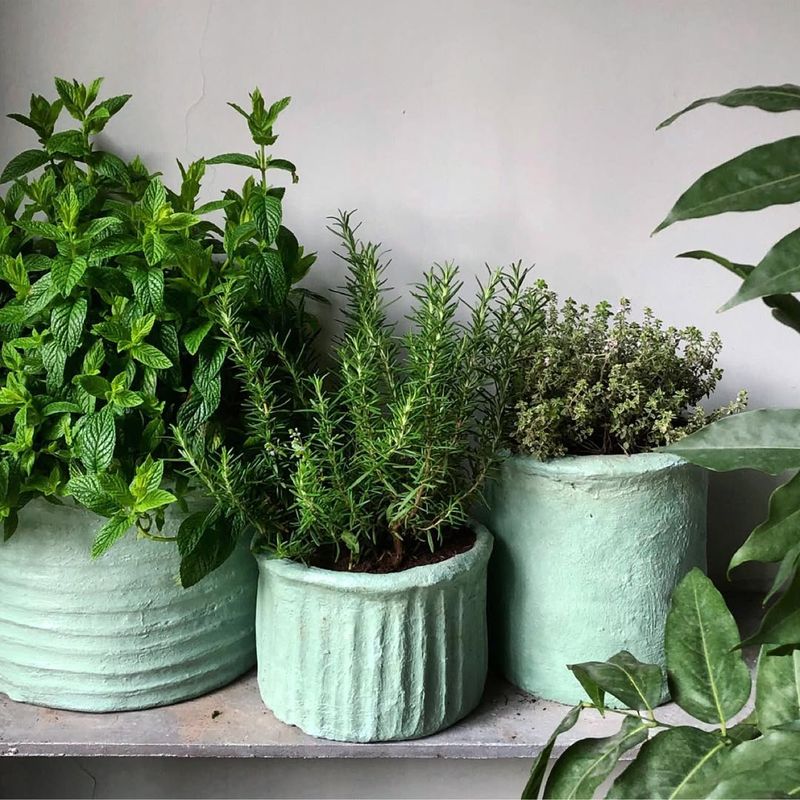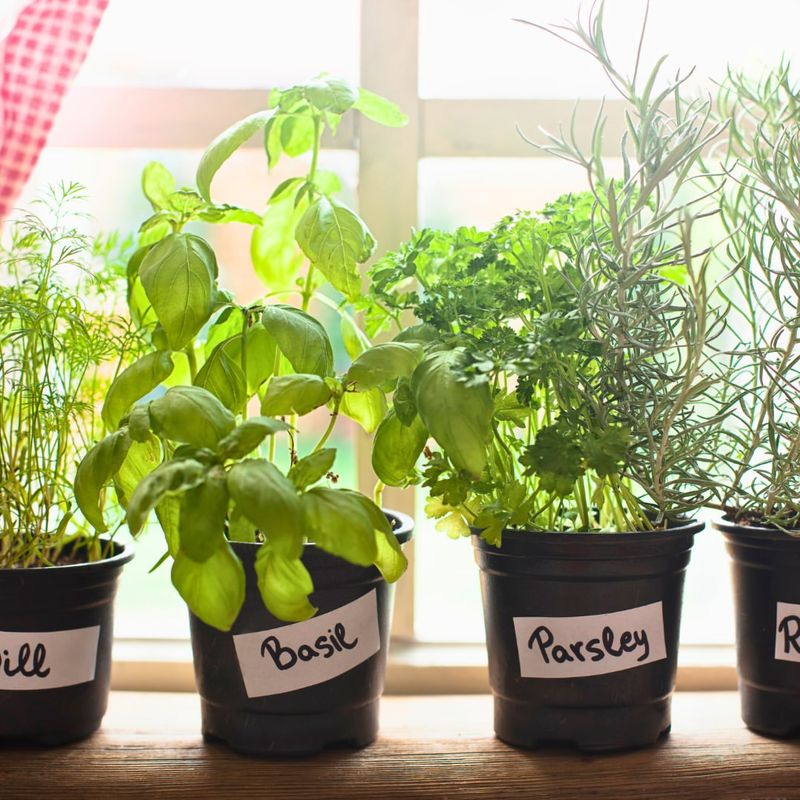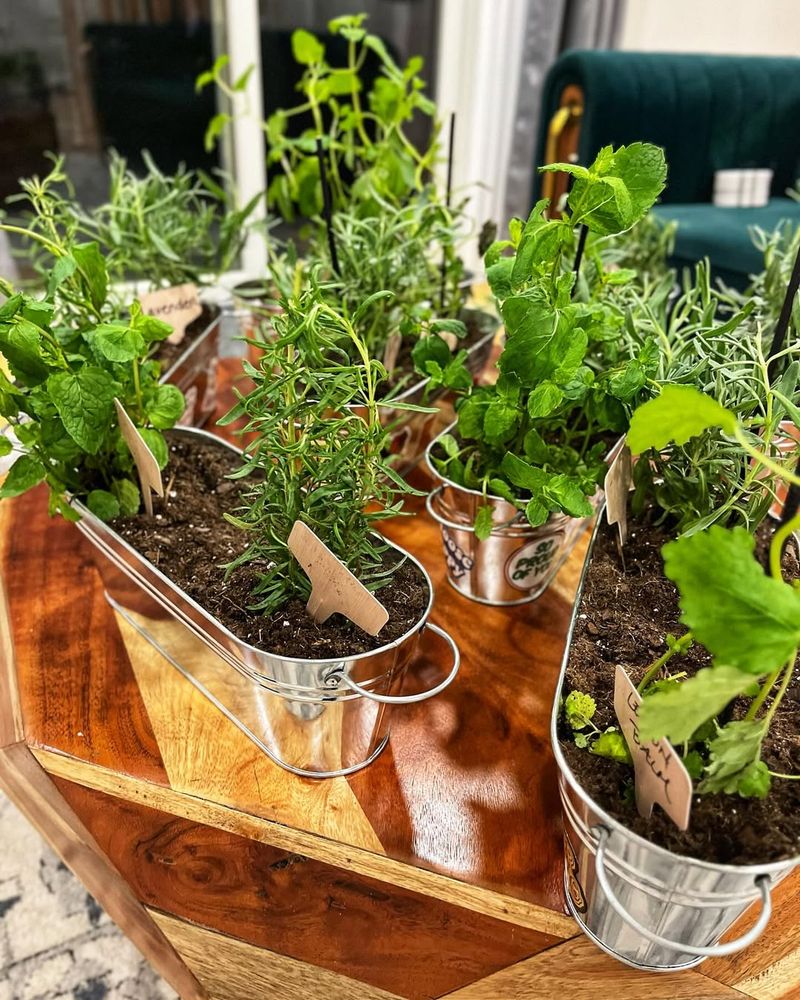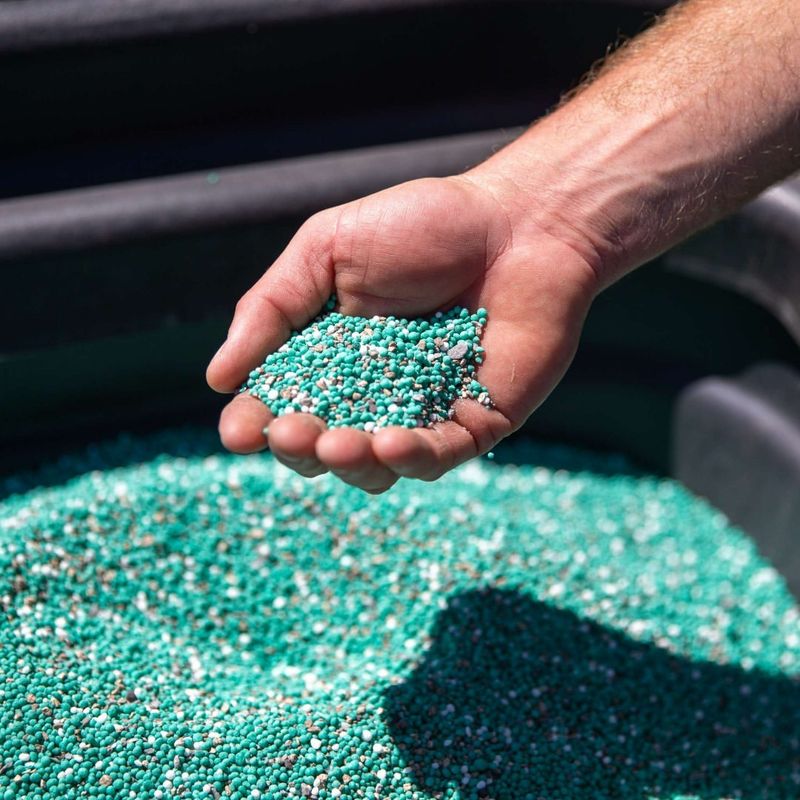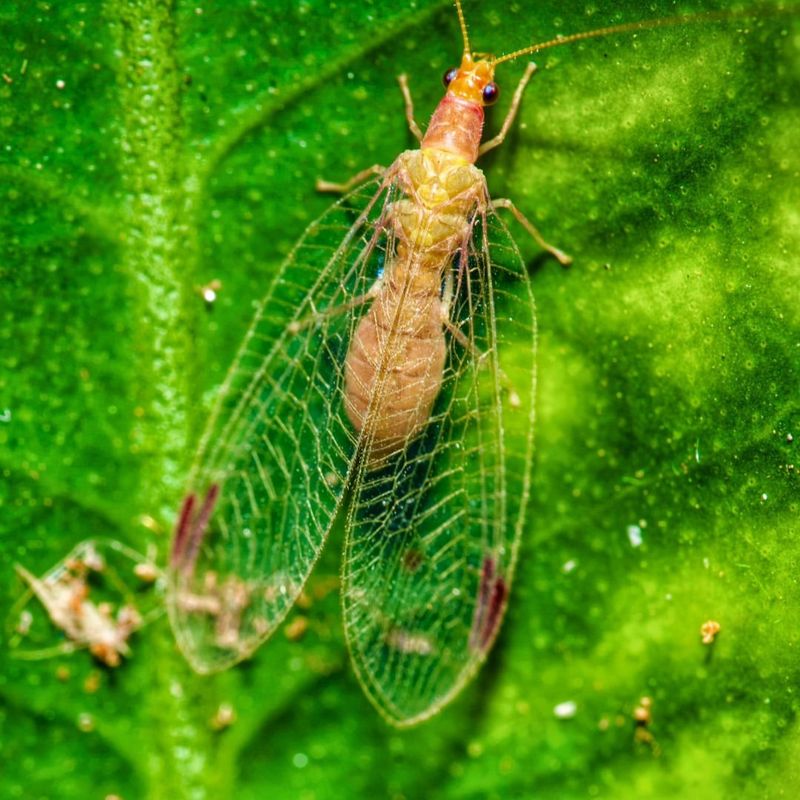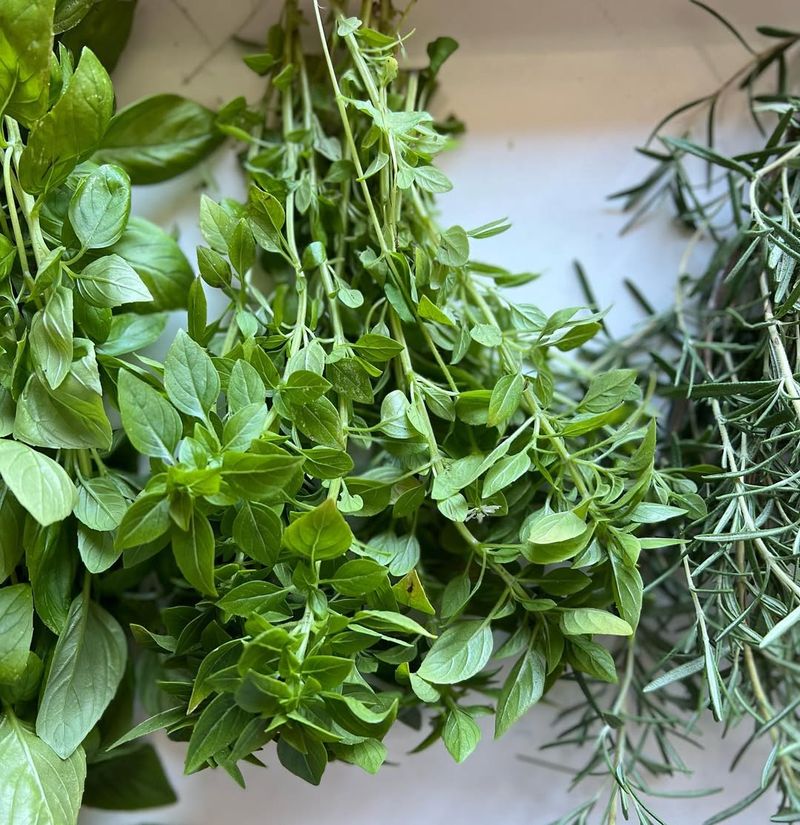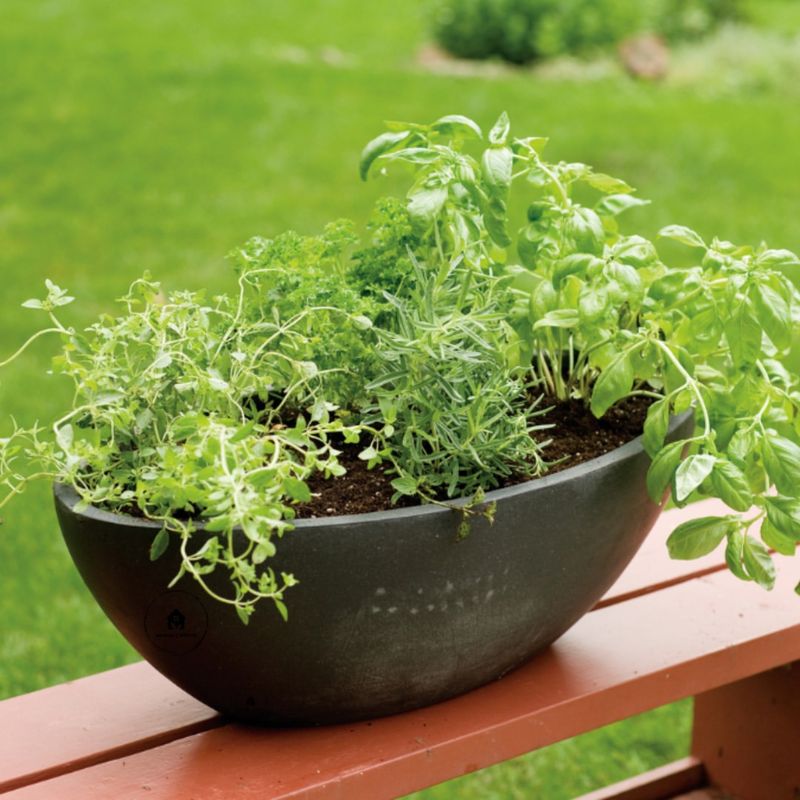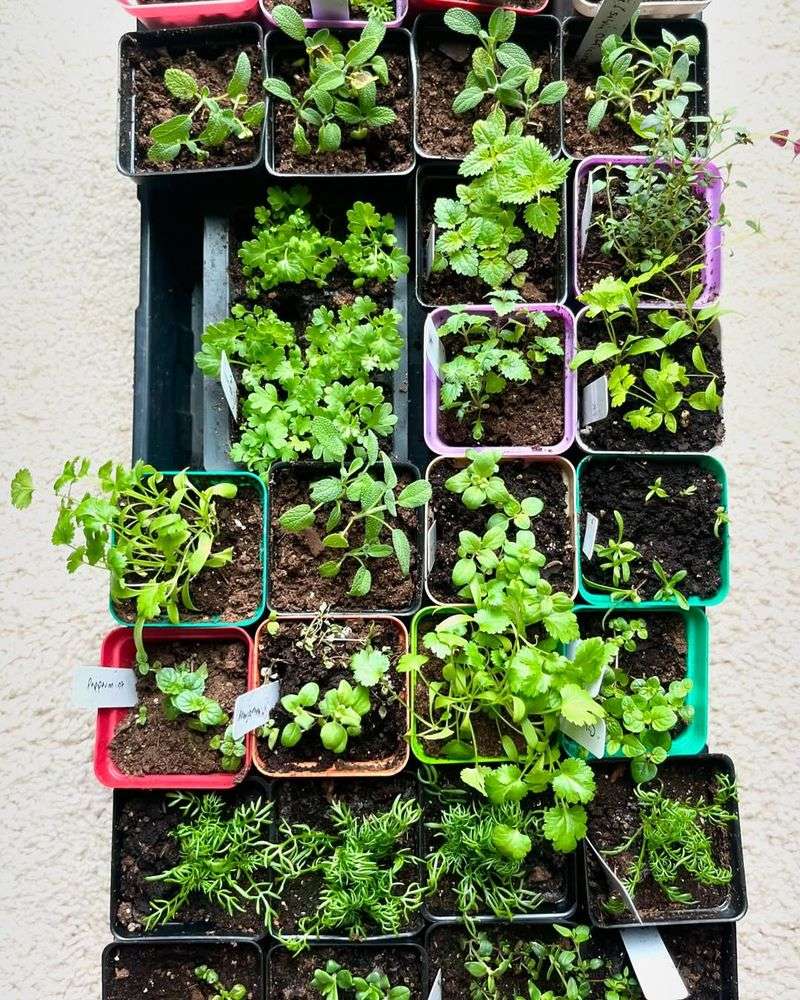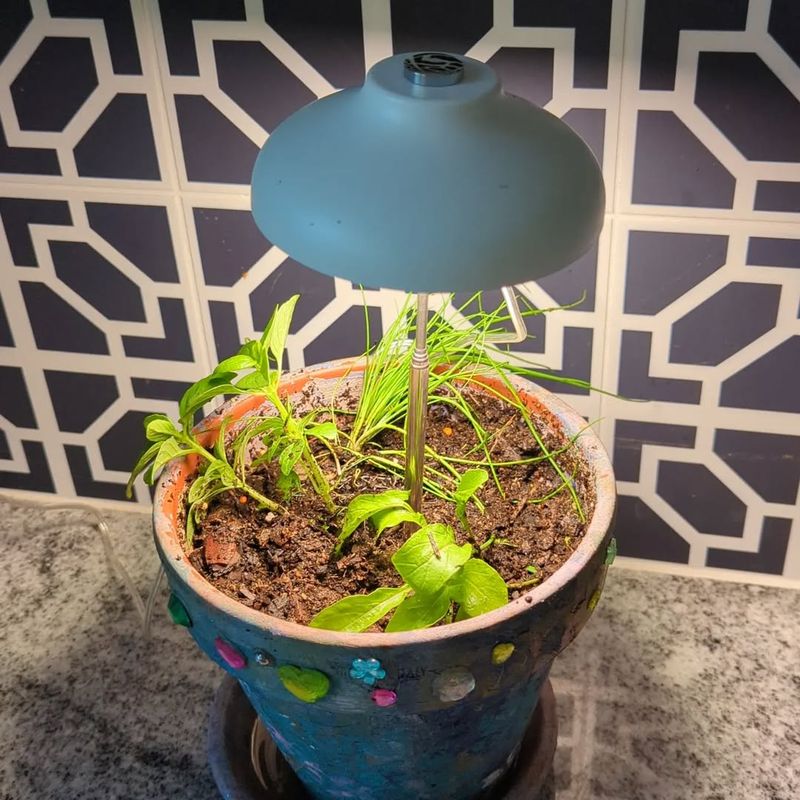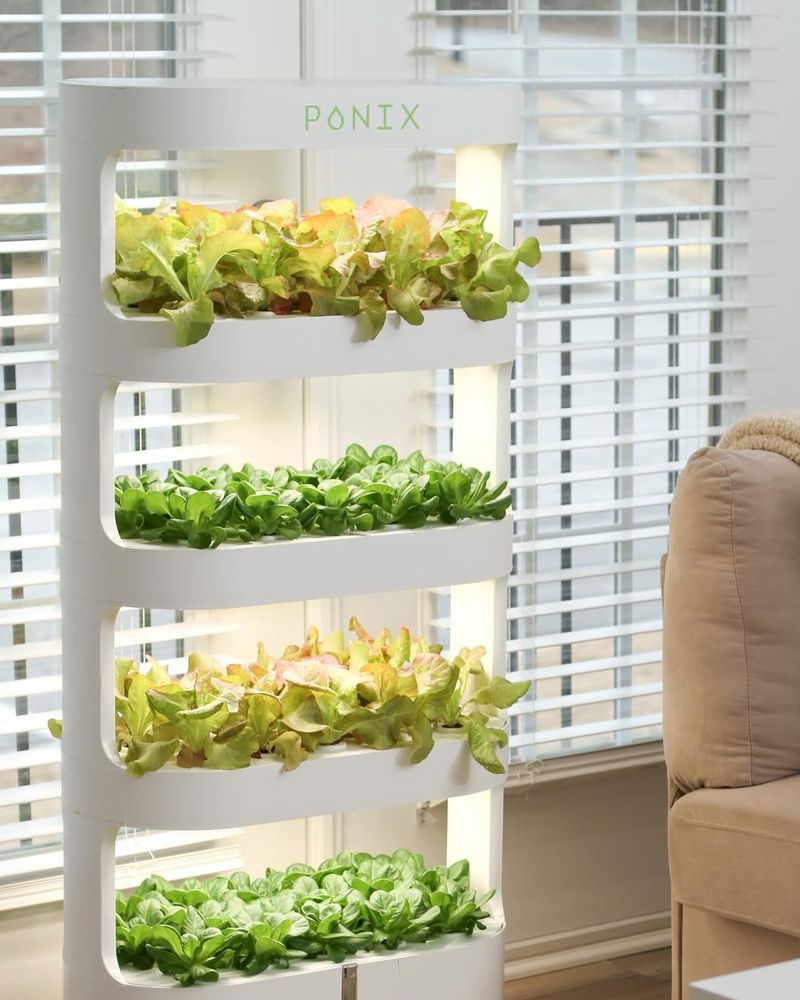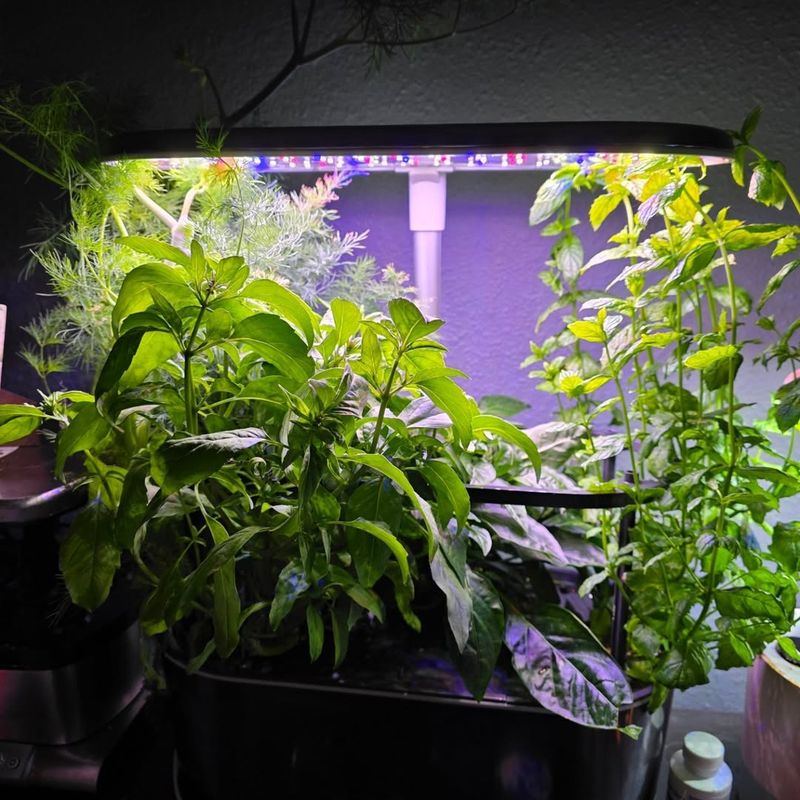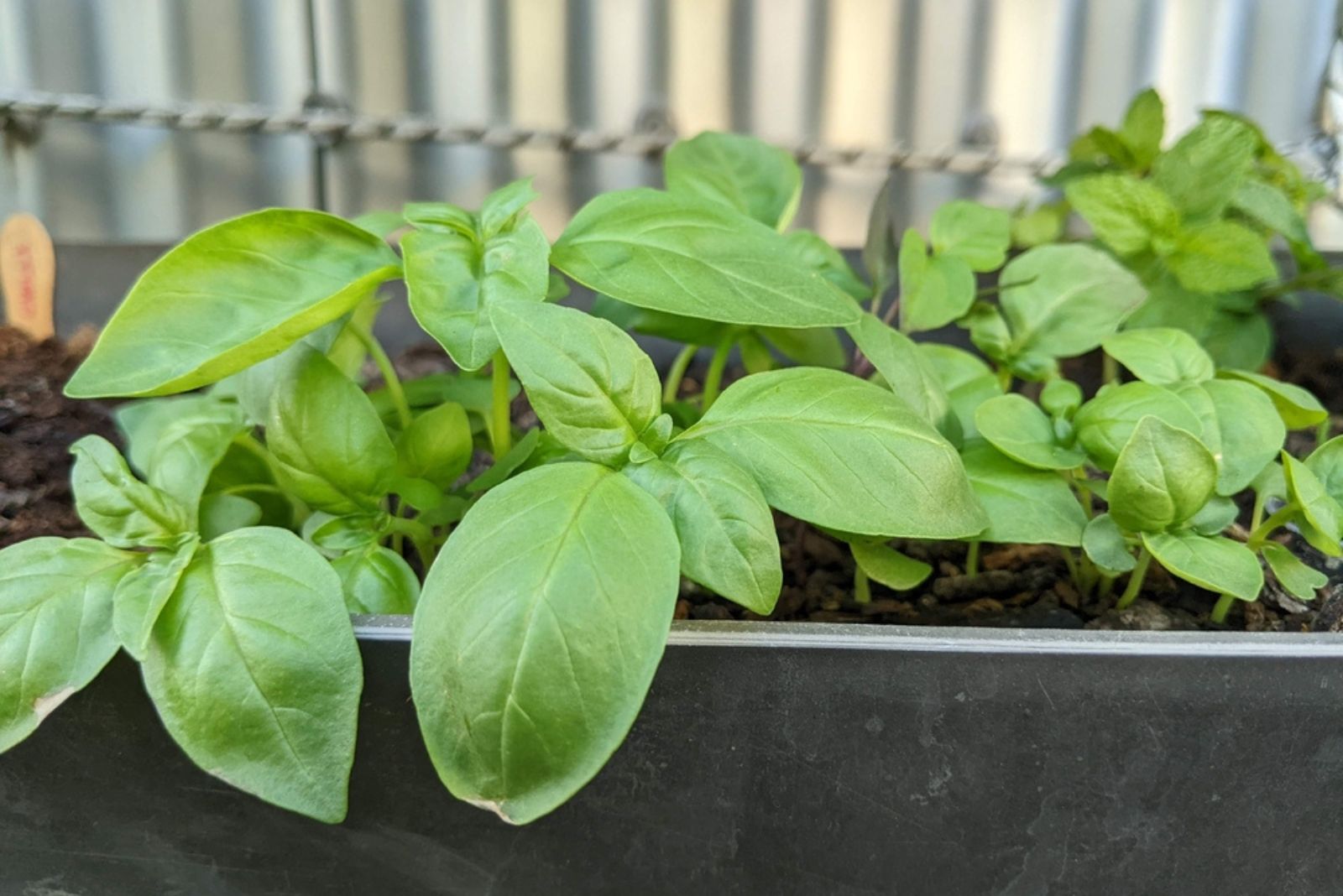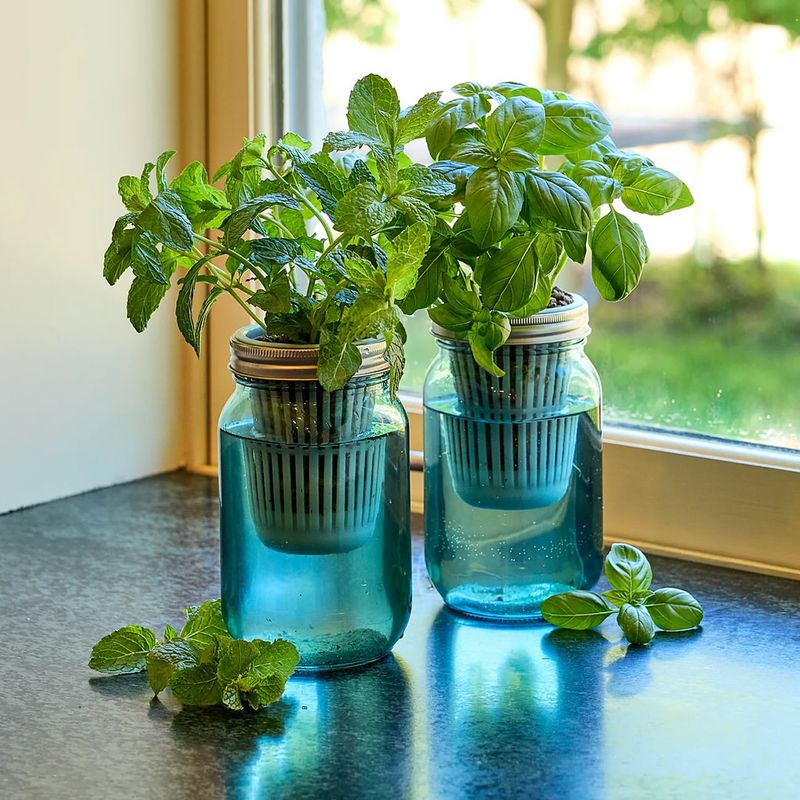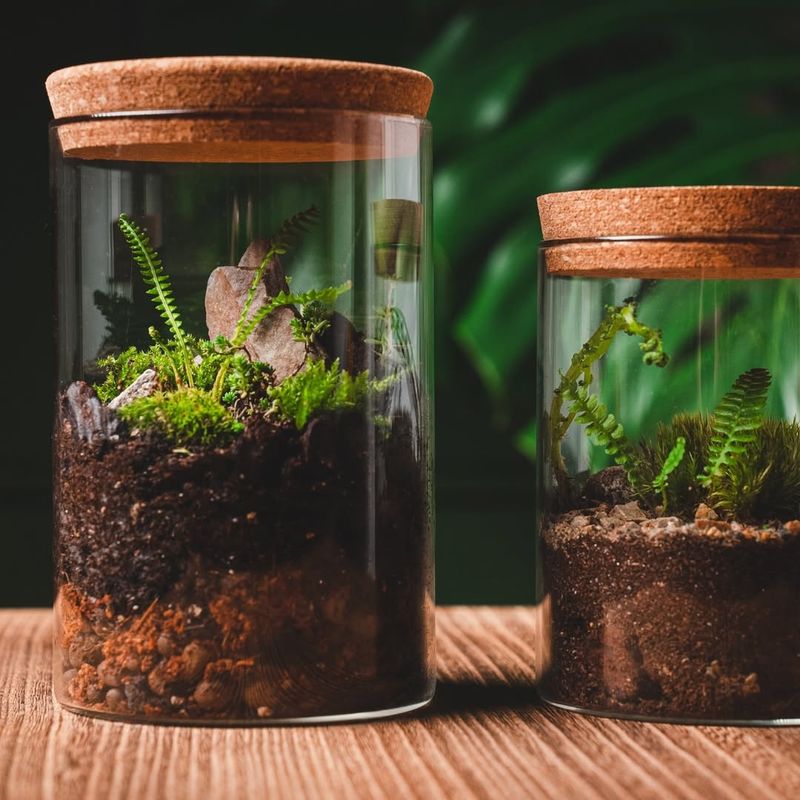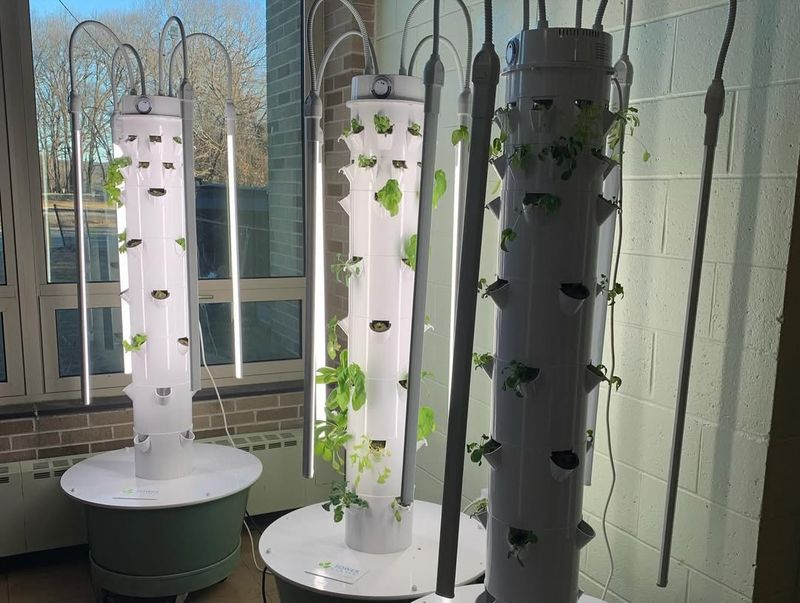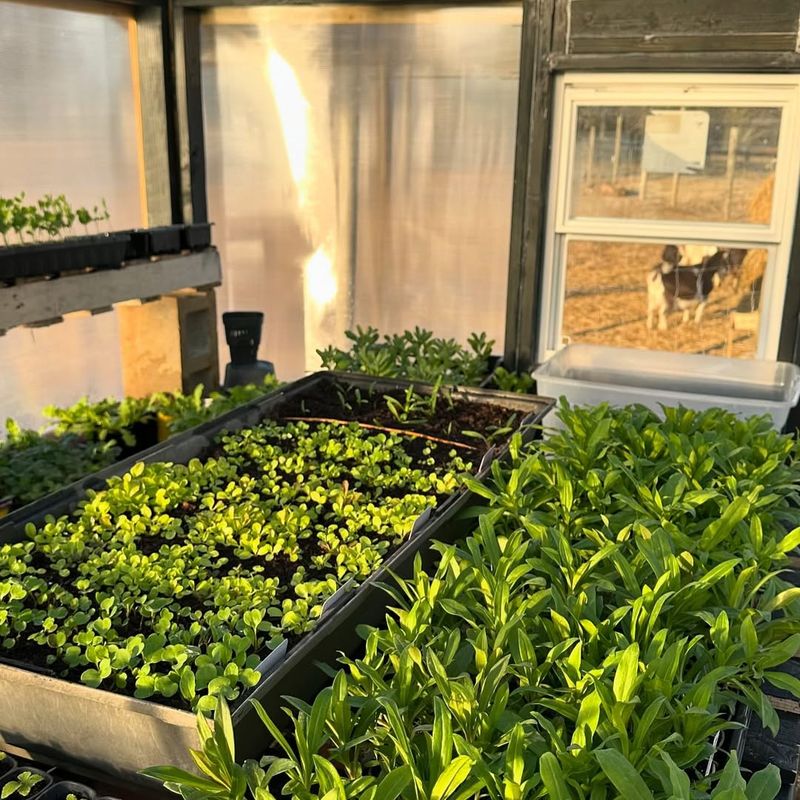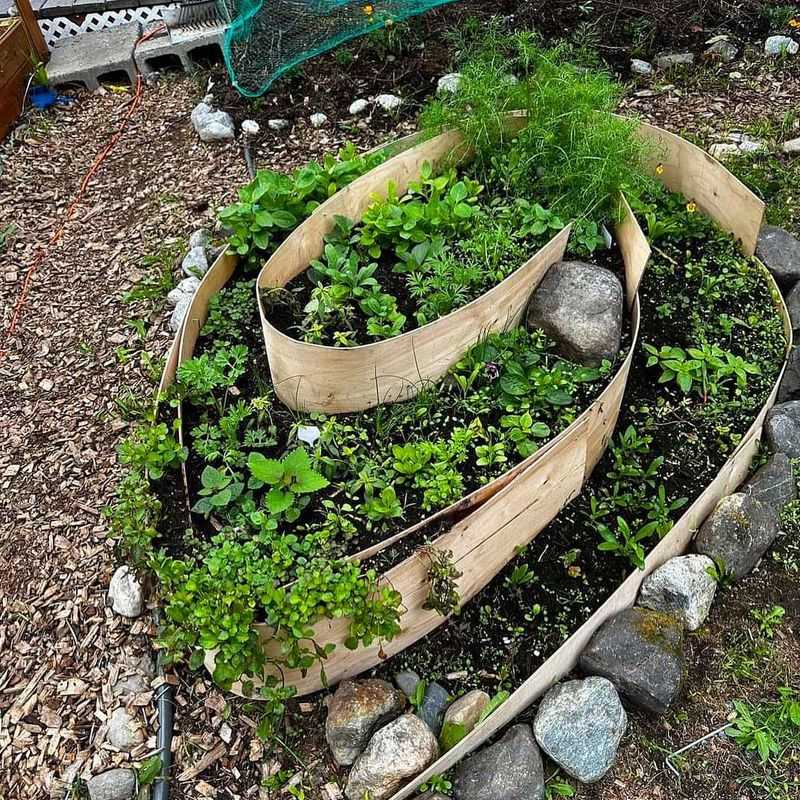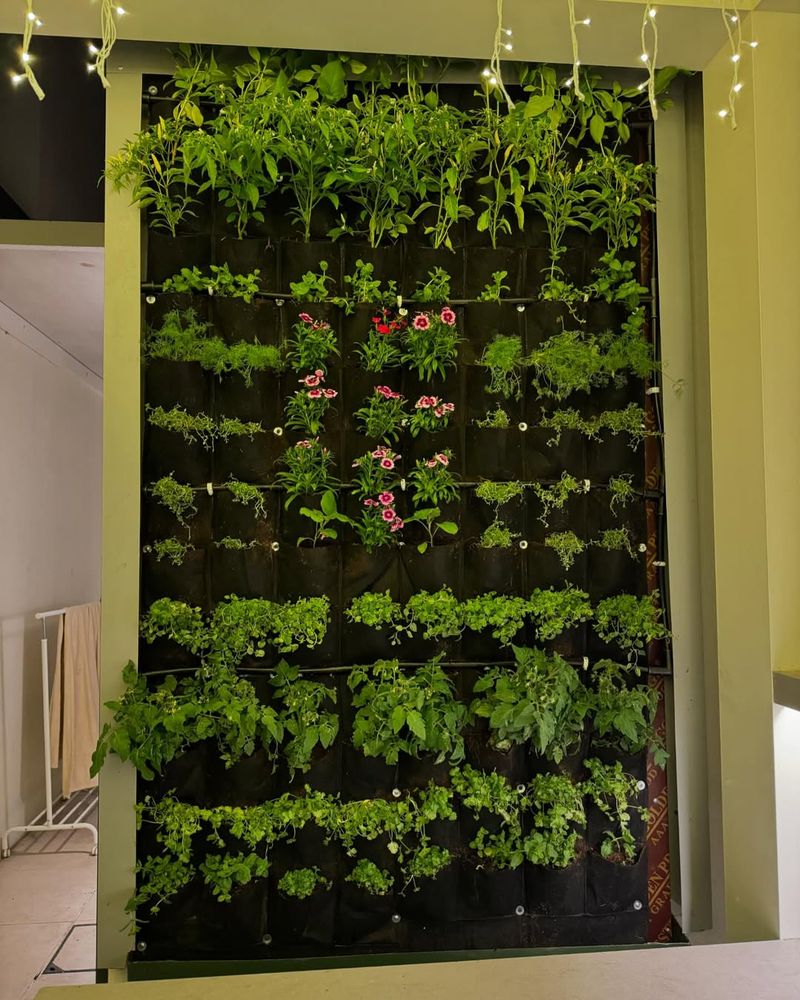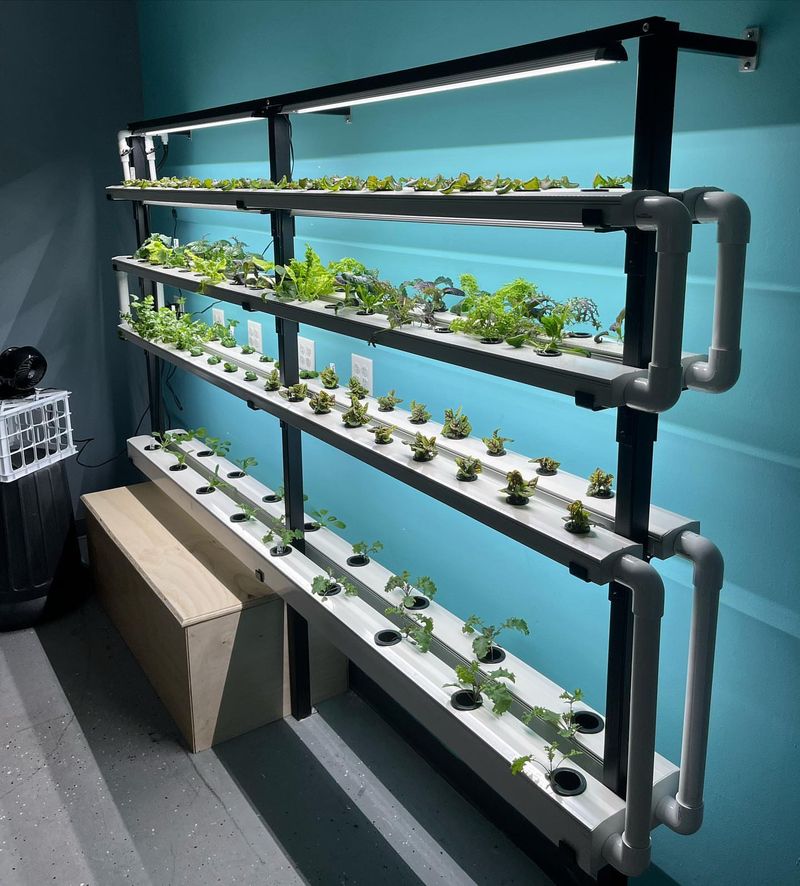Herbs are easy—until you try growing them from seed, indoors, without the chemicals. Suddenly it’s leggy stems, slow growth, and mystery bugs. But it doesn’t have to be that way. These tips make pesticide-free growing doable, even if you’re short on space, sunlight, or experience.
From soil tricks to light hacks, this is how smart growers start strong and stay chemical-free. Plus, a few things no one warns you about—until it’s too late. Time to grow herbs that are healthy, happy, and totally homegrown.
1. Seed Selection
Starting with the basics, the choice of seeds can set the tone. Basil, for instance, is an excellent choice for beginners. It’s forgiving and grows well indoors. Choose organic, non-GMO seeds to ensure a truly pesticide-free herb garden.
These seeds are widely available at garden stores and online. Remember to check the expiration date on the seed packets. Fresh seeds increase the chances of successful germination. Store them in a cool, dry place if not planting immediately. This step ensures your seeds remain viable for future use.
2. Soil Selection
The secret to lush growth lies beneath the surface, starting with soil. Cilantro, a popular herb, thrives in well-draining soil. Opt for organic potting mix; it provides the right balance of nutrients. Avoid soil with added fertilizers or chemical enhancements.
Herb roots need room to breathe, so consider adding perlite or sand to improve aeration. Mixing in some compost can enhance soil fertility naturally. Make sure the soil is slightly damp before planting seeds, as this creates an optimal environment for germination.
3. Light Conditions
Natural light can make all the difference. Indoor gardeners often choose mint due to its adaptive nature. Place your herb pots near a window that receives plenty of sunlight. Ideally, they need about 6-8 hours of light daily. If natural light is limited, consider investing in a grow light.
These lights mimic sunlight and provide necessary wavelengths for plant growth. Adjustable LED grow lights are energy-efficient and effective. Keep them about 6 inches above the plants to avoid overheating or burning the leaves.
4. Watering Techniques
Watering can be tricky if not timed right. Take thyme, for example, which prefers a dry environment. Allow the topsoil to dry out between waterings to prevent root rot. Use a watering can with a nozzle for even distribution.
During the winter months, indoor heating can dry out the air, affecting moisture levels. Misting plants can help maintain humidity. Always water in the morning to give plants time to absorb moisture before the evening. This practice keeps your herbs happy and thriving.
5. Container Choices
The type of container you use can impact growth. Chives, a favorite among chefs, do well in wide, shallow pots. Choose containers with drainage holes to prevent waterlogging. Terracotta pots are excellent for airflow but require more frequent watering.
Plastic pots retain moisture longer, reducing watering frequency. Consider repurposing containers like coffee tins for a creative touch. Ensure they are clean and have adequate drainage. These small details can make a big difference in your indoor herb garden.
6. Temperature Control
Temperature is key in creating a cozy environment. Dill, a hardy herb, prefers cool climates. Keep your indoor herb garden in a room with stable temperatures. Avoid placing them near drafts or heaters as fluctuations can stress plants.
A consistent temperature of 65-75°F is ideal for most herbs. Use a simple indoor thermometer to monitor room conditions. If the room is particularly cold, consider using a heat mat under pots to gently warm the soil. This keeps your plants comfortable year-round.
7. Humidity Management
Indoor air can be surprisingly dry, affecting growth. Sage, known for its fragrant leaves, thrives in moderate humidity. Consider using a small humidifier in your plant area. This can help maintain a consistent moisture level in the air.
Grouping plants together can also create a microclimate, increasing humidity naturally. Avoid placing herbs directly in front of air vents. These small tweaks can create a more welcoming environment for your indoor garden. Happy plants mean a healthy, pesticide-free herb harvest.
8. Fertilization Strategy
Feeding your plants the right nutrients is crucial. Basil loves a good feed and can benefit from organic liquid fertilizers. Apply fertilizers sparingly, about once a month during the growing season. Over-fertilization can lead to weak, leggy growth.
Always follow the instructions on the product label for the best results. Compost tea is another excellent option, providing a gentle nutrient boost. Remember, less is more when it comes to fertilizing your indoor herbs.
9. Pest Control Without Chemicals
Keeping pests at bay naturally is a gardener’s dream. Rosemary is known for its natural pest-repelling properties. Use neem oil as a gentle, effective pesticide alternative. Spray it on leaves to deter common pests like aphids. Introducing beneficial insects like ladybugs indoors can also help control pests.
Ensure plants are not overcrowded, as good air circulation reduces pest infestations. Keeping your garden clean and debris-free prevents pests from settling in, ensuring a healthy, vibrant herb garden.
10. Pruning and Harvesting
Regular maintenance is key. Oregano, often used in Italian dishes, benefits from frequent pruning. Trim the top parts of stems to encourage bushier growth. Use sharp, clean scissors to avoid damaging the plant. Harvest herbs regularly to encourage continuous growth.
Pinch off leaves as needed for cooking, but avoid stripping the plant bare. Pruning not only keeps your plants tidy but also enhances flavor. Plus, there’s nothing more satisfying than using fresh herbs from your indoor garden.
11. Companion Planting
Some plants just work well together. Basil enjoys the company of tomatoes, enhancing their flavor when grown in proximity. Grouping compatible plants can improve growth and reduce the chance of pest issues.
Avoid mixing herbs that have vastly different water or light needs. Companion planting can also save space, allowing you to grow more in a limited area. Planning your indoor garden with compatible herbs creates a harmonious environment, leading to a more productive harvest.
12. Rotation and Resting
Giving your plants a change of scenery can work wonders. Even herbs like parsley appreciate a little rotation. Move pots to new locations periodically to ensure even light exposure. Resting periods are crucial for herbs to recover and regain strength.
After heavy harvesting, let plants rest to restore their energy. This practice leads to healthier, more robust plants. Plus, it helps prevent soil nutrient depletion, giving you a bountiful pesticide-free harvest.
13. Using Grow Lights
In some homes, natural light is a luxury. Herbs like thyme can flourish under grow lights. These lights provide the full spectrum of sunlight, encouraging healthy growth. LED grow lights are cost-effective and easy to use.
Position them close to your plants but not too near to avoid burning foliage. Adjust the height as plants grow taller. This artificial light solution ensures your herbs receive adequate lighting all year round, regardless of the weather.
14. Hydroponic Systems
If space is tight, hydroponics might be your answer. Mint thrives in this soilless environment. It involves growing plants in nutrient-rich water, eliminating the need for soil. These systems are compact and efficient, perfect for urban gardeners.
They require less water than traditional methods and reduce the risk of soil-borne pests. With the right setup, your herbs can grow faster and healthier. Hydroponics is a modern approach to a pesticide-free indoor garden.
15. Aerogarden Options
For technology enthusiasts, aerogardens are a treat. Chives grow well in these automated systems. Aerogardens provide water, light, and nutrients, all controlled by a simple interface. They’re ideal for those short on time or gardening experience.
The compact design fits on kitchen counters, making fresh herbs easily accessible. These systems take the guesswork out of indoor gardening, ensuring your herbs thrive effortlessly with minimal intervention.
16. DIY Planter Boxes
Feeling crafty? Creating your own planter boxes can be fun. Parsley grows well in these customized containers. Building your own allows for personalization in size and design. Wooden boxes provide good insulation for roots and maintain moisture levels.
Ensure they have proper drainage to prevent root rot. This DIY approach not only saves money but also adds a personal touch to your indoor herb garden. Plus, it’s a great weekend project for the whole family.
17. Mason Jar Gardens
Have extra mason jars lying around? They make excellent herb containers. Basil can flourish in these compact, glass homes. Drill holes in the lids for drainage and fill with pebbles before adding soil. These jars are perfect for windowsills where space is limited.
They also make adorable kitchen decorations. Just remember to monitor moisture levels, as they can dry out quickly. Mason jar gardens are a quirky, yet practical addition to your indoor herb care routine.
18. Recycled Containers
Going green never looked so chic. Mint can thrive in an array of recycled containers. From tin cans to old teacups, the only limit is your imagination. Ensure containers are clean and have drainage holes. Line the bottom with small stones before adding soil to prevent waterlogging.
This eco-friendly approach is not just sustainable but also adds character to your indoor garden. Get creative with your choices, and maybe even start a collection!
19. Vertical Herb Gardens
Maximize your space with vertical gardening. Thyme loves the vertical life, thriving in stackable planters. This method saves floor space and adds a green touch to your walls. Use lightweight pots to avoid overloading your wall supports.
Vertical gardens provide good air circulation, reducing pest issues. They’re ideal for small apartments, offering fresh herbs without taking up precious room. By going vertical, you create a stunning, space-saving herb garden indoors.
20. Window Sill Setup
Windowsills offer the perfect perch for herbs. Rosemary thrives in the sunlit spot of a south-facing sill. This setup is convenient for quick snips during cooking. Ensure pots have saucers to catch excess water and protect the sill.
Rotate pots occasionally for even light distribution. Windowsill gardens are accessible and low-maintenance, making them ideal for beginners. They provide easy access to fresh herbs while enhancing your kitchen’s aesthetic appeal.
21. Terrariums for Herbs
Miniature worlds for your herbs can be enchanting. Cilantro enjoys the humid environment of a terrarium. These glass enclosures maintain moisture levels, reducing the need for frequent watering. Ventilation is crucial, so choose terrariums with removable lids.
This setup suits small herbs and is a conversation starter. Plus, terrariums are visually appealing and require minimal maintenance. They offer a unique way to grow your herbs pesticide-free indoors.
22. Seed Starting Kits
New to gardening? Seed starting kits make it easy. Oregano does well in these beginner-friendly systems. Kits include everything you need, from soil pods to seeds. Simply add water and place in a light spot.
Cover with plastic to create a greenhouse effect for better germination. Once seedlings are big enough, transplant them to larger pots. These kits simplify the process, giving you a solid start in indoor herb gardening.
23. DIY Hydroponic Towers
For the ambitious, DIY hydroponic towers are exciting. Basil can flourish in these vertical installations. Constructed from PVC pipes, these towers maximize vertical space. They circulate water and nutrients efficiently, supporting robust growth.
You’ll need a pump and basic tools, but the results are rewarding. Hydroponic towers are a testament to creativity and innovation in gardening without soil. They offer a pesticide-free, modern twist to traditional indoor planting.
24. Automatic Watering Systems
Busy schedule? Automatic watering systems are your best friend. Herbs like dill benefit from consistent watering. These systems can be set to water plants at optimal intervals. By regulating moisture levels, they reduce the risk of over- or under-watering.
This ensures healthier growth with minimal effort. Suitable for frequent travelers or forgetful gardeners, these systems make maintaining a thriving indoor herb garden stress-free.
25. Cold Frames Indoors
Cold frames aren’t just for outdoors. Sage appreciates the controlled environment. These structures trap heat and moisture, simulating a greenhouse effect. They’re ideal for starting seeds or protecting delicate plants during colder months.
You can build one from simple materials like old windows and lumber. Indoor cold frames offer a nurturing space for herbs, promoting growth and protecting them from extreme indoor temperature fluctuations.
26. Herb Spirals
Herb spirals are as functional as they are decorative. Chives fit snugly in these spiral creations. Built with stones or bricks, they allow for varied microclimates. Each level offers different moisture and sunlight levels, catering to diverse herb needs.
They make an eye-catching centerpiece in any indoor setting. Herb spirals combine aesthetics with practicality, offering a unique solution to growing herbs indoors without pesticides.
27. Edible Wall Art
Combine art with gardening through edible wall installations. Oregano looks stunning in these green artworks. Use wall-mounted frames filled with soil and herbs. These installations add a touch of nature to your decor while providing fresh ingredients.
Ensure frames have proper watering systems to maintain plant health. Edible wall art is a creative and space-saving way to incorporate herbs into your indoor lifestyle. Plus, it’s sure to impress your guests.
28. Aquaponics System
Blend fishkeeping with gardening using aquaponics. Mint thrives in this symbiotic environment. Fish waste provides nutrients, while plants filter the water. This system is sustainable and requires less water than traditional gardening.
It’s a fascinating way to grow herbs while keeping fish. Maintenance involves regular monitoring but the rewards are fresh, pesticide-free herbs and happy fish. Aquaponics is an innovative approach to indoor herb gardening, combining ecology with practicality.

